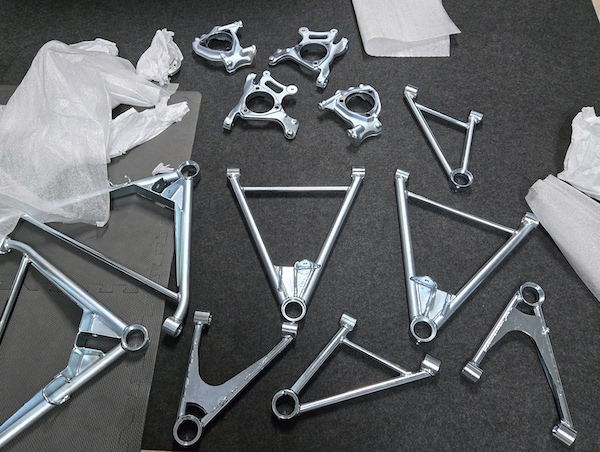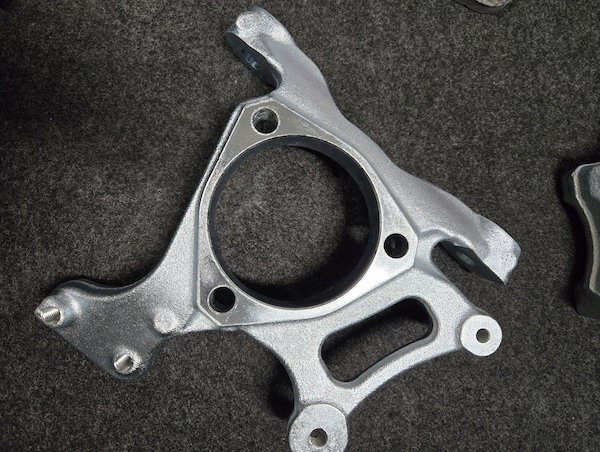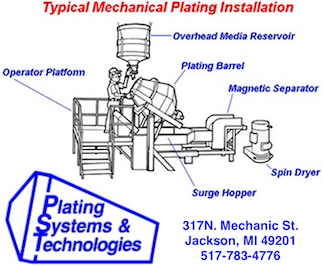
-----
Hydrogen Embrittlement of Zinc Plated Wishbones?
Q. Hello all, I know nothing about metal plating at all. I am an end user, so if I misspeak, please forgive me.
I am conflicted on if I have some parts that are safe to use. I had a full set of 8 wishbones, and 4 uprights plated with clear zinc. In the past I had the bright idea to paint the wishbones, but all that did was destroying the OEM zinc coating. I removed the rust using Evap-O-Rust, oiled them so they wouldn't rust in the mean time, and then I handed them over with the ask for a coating that will prevent future rust. I got handed back some beautiful shiny clear zinc plated metal.


The problem is after this process I learned about something called hydrogen embrittlement. Brittle wishbones sound like an extremely dangerous situation. Knowing nothing about the plating process, I called and asked. They said that they plated with clear zinc, and that since I gave them cleaned metal they didn't have to use strong acids to clean them, which is where the hydrogen would be introduced to the metal. Which all sounds great to me, but everything I read online is some variation on "It is difficult to avoid introducing hydrogen when plating zinc".
I am trying to be a good customer and not keep calling and asking the same thing that was already explained to me. My lack of understanding is making me very nervous about using the parts. My hope is that the people here can give me the insight that I need. Thank you for your time.
End user - Asheville/North Carolina
August 28, 2025
A. Hi Ethan,
Hydrogen embrittlement is of no concern for low carbon steel, but is of great concern for hard, high-strength heat treated steel. Unfortunately, I am not familiar with what kind of steels are required and used for this application. The weldments don't look like they would be high strength steel. I'm not quite sure whether the other part is a casting, unlikely to be high strength steel, or a forging which would likely be.
ASTM B633 says "All electroplated parts 1200 MPa or higher shall be baked at 190 °C for 3 hours or more within 4 hours after electroplating".
Hopefully someone familiar with these parts will knows their typical hardness & strength and will comment.
Luck & Regards,

Ted Mooney, P.E. RET
Striving to live Aloha
finishing.com - Pine Beach, New Jersey
Ted is available for instant help
or longer-term assistance.
A. Since there are only 8 parts, there exists the potential of putting the parts under the stress that they would encounter in use. If they don't fail in 48 hours, you can consider them to be okay. If they fail, then you have dodged the bullet of putting defective parts in service.

Tom Rochester
CTO - Jackson, Michigan, USA
Plating Systems & Technologies, Inc.

September 8, 2025
Q, A, or Comment on THIS thread -or- Start a NEW Thread